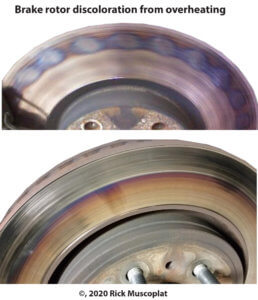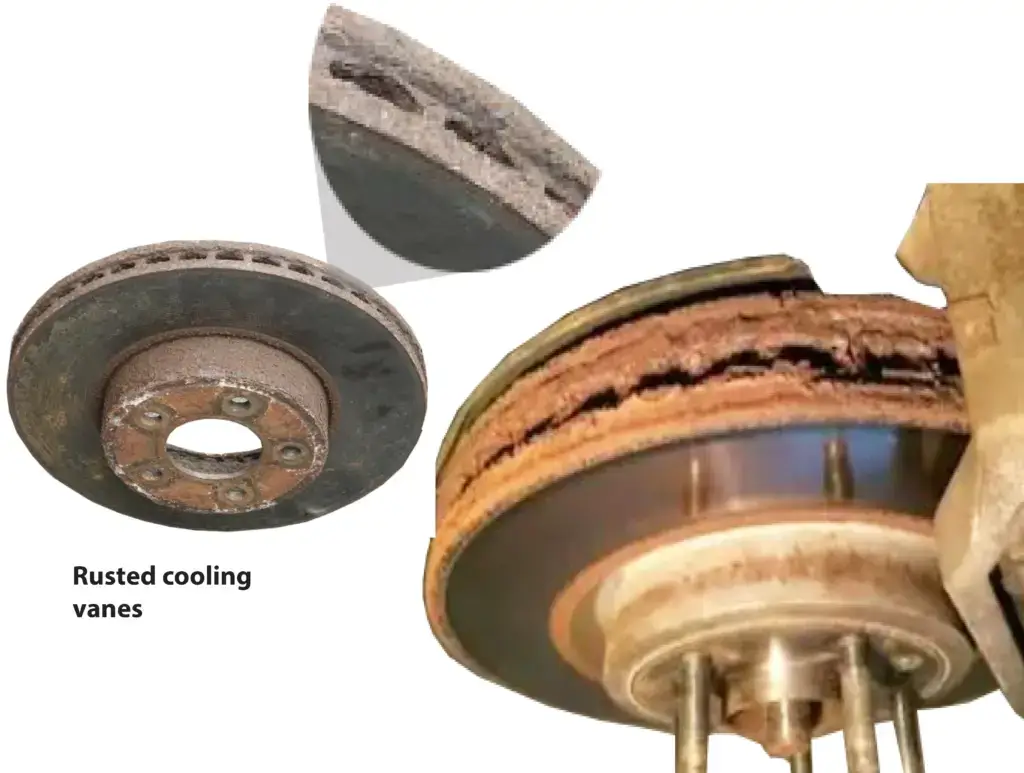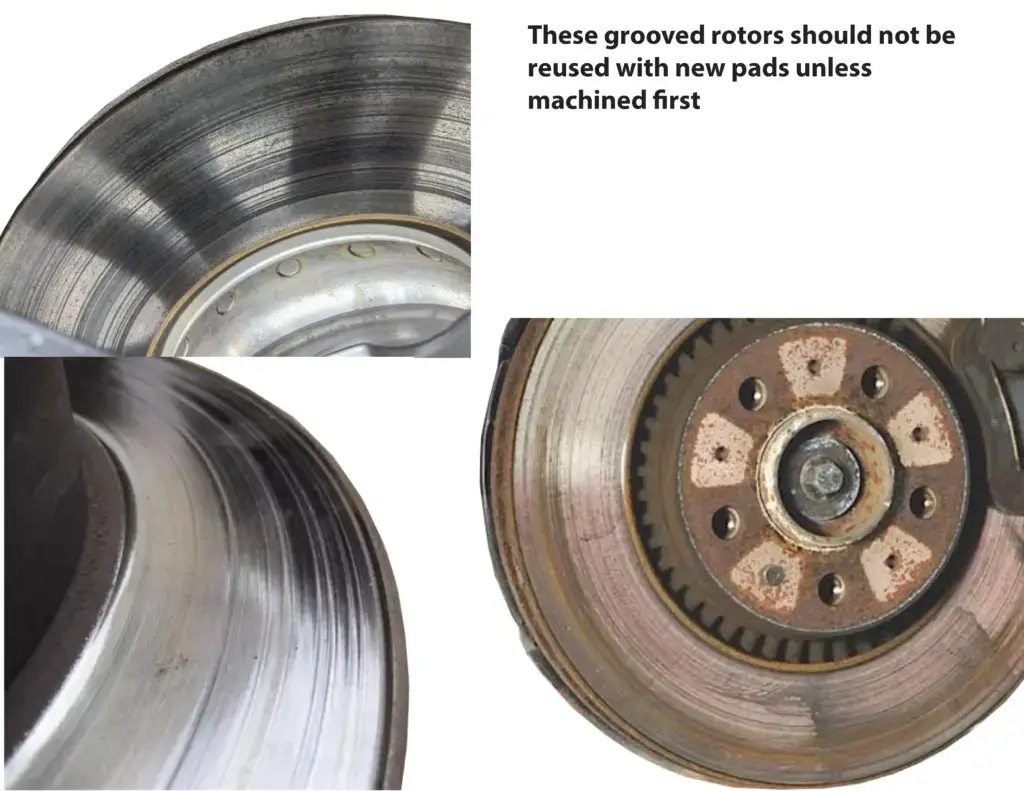Replace brake rotors with new brake pads?
Do you always replace brake rotors with new pads?
I see this question asked a lot and I’ll give you the answer based on best practices. To do a proper brake job, it’s important to either machine the old rotor or replace it with a new rotor when installing new brake pads. This article explains why you should always replace brake rotors with new pads or at least machine the old rotors before installing new pads.
Rotors wear and measuring the old rotors is the first step in determining whether they are even candidates to be machined
Can you resurface your old brake rotors?
Measure the old rotor
You can’t determine rotor thickness visually. You must use a micrometer and measure in at least three places
What is Nominal thickness
The thickness of a new rotor
What is discard thickness
When a rotor reaches discard thickness it must be removed from service and recycled. Most people think the discard thickness is based on the rotor’s ability to dissipate heat. It’s not. Instead, the discard thickness is based on maximum caliper piston travel limits. If the rotor is thinned beyond it’s discard thickness and the brake pad friction material wears down to the backing plate, the caliper piston will pop out of the bore. The average difference between nominal and discard thickness is .050”
What is Machine-to thickness
This refers to the thinnest the rotor can be machined to and still provide enough metal to withstand the wear that will be encountered with a new set of pads. In other words, after machining the rotor, it must be at least .015” thicker than the discard thickness.
Even if the rotor meets the above thickness requirements, you should not reuse or resurface a rotor if:
• The groove thickness is .039” or deeper
• The rotor has heat discoloration spots (blue or purple).  The metallurgy has changed and the rotor will never perform properly
The metallurgy has changed and the rotor will never perform properly
• The rotor has cracks. It cannot be resurfaced or reused
An old brake rotor should not be reused if the cooling vanes are clogged with rust
• You haven’t cleaned the rust from the cooling vanes. Sandblasting the cooling vanes is the most effective way to remove rust.

The clogged cooling vanes in these images means these rotors can cool properly. That will wear out the new pad much faster
How long do brake rotors last?
Carmakers design brake rotors to last through at least two sets of brake pads. But that’s a best-case scenario and doesn’t account for issues like corrosion, grooving, or disc thickness variation caused by lateral runout.
How to know when to replace rotors?
If you’re feeling pedal pulsation, chances are the rotor has uneven deposits of friction material that’s causing disc thickness variation. You restore the rotor by machining it if it meets the following thickness standards, is crack-free, contains no heat discoloration and the rust is cleaned from the cooling vanes.
Lastly, old rotors can contaminate the new pads
Most late model vehicles use ceramic or non-asbestos organic brake pads. These pads work with film-on-film adherent friction technology. The brake pads transfer a thin layer of brake friction material onto the face of the rotor during the burnishing (break-in) period. From that point on, the brake pads generate stopping power by rubbing against this “transfer layer” of material that creates heat, degrades and gets continuously replaced.
If you install a different type of brake pad, other than the kind used to create the transfer layer, the old transfer layer can contaminate the face of the new brake pads, reducing it’s braking effectiveness.
©, 2021 Rick Muscoplat
Posted on by Rick Muscoplat

